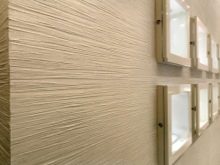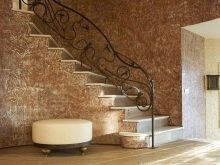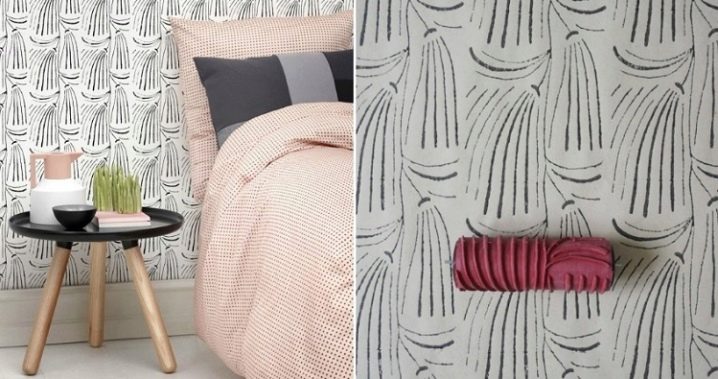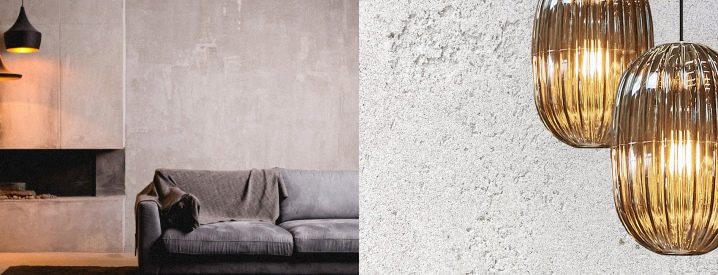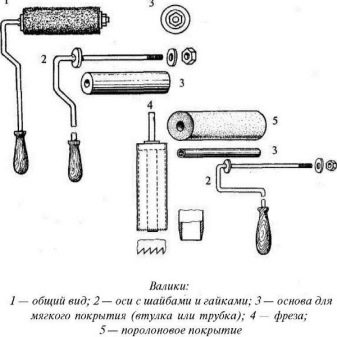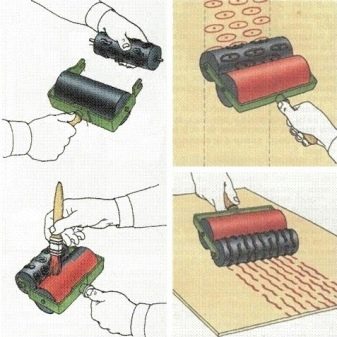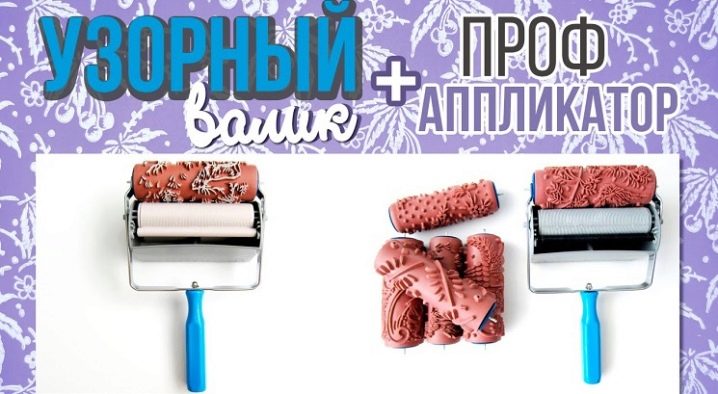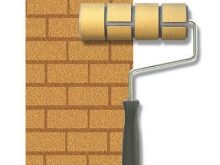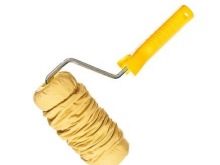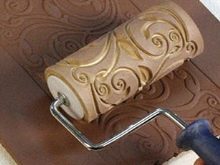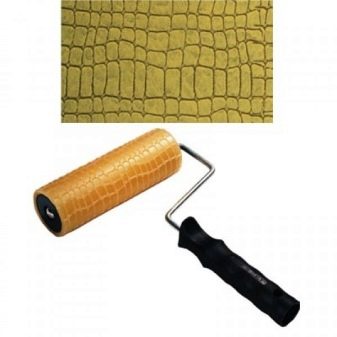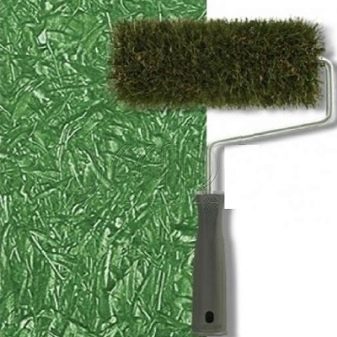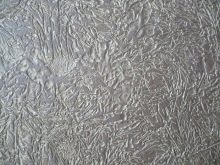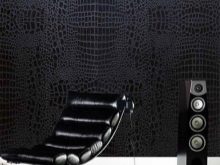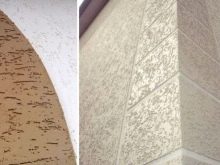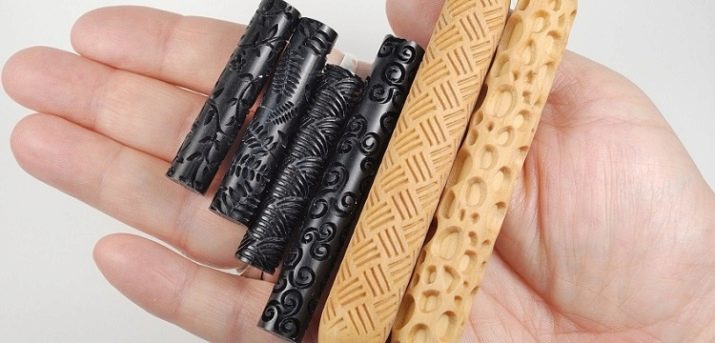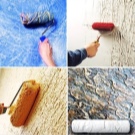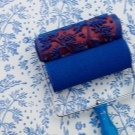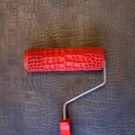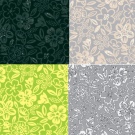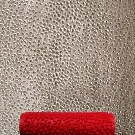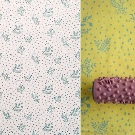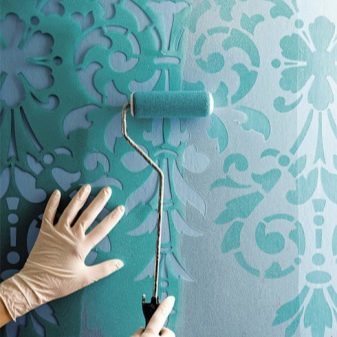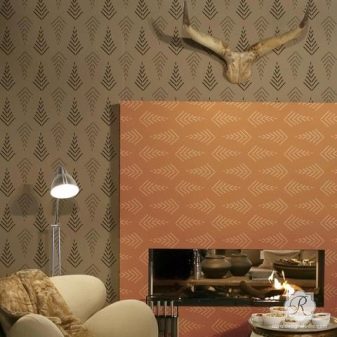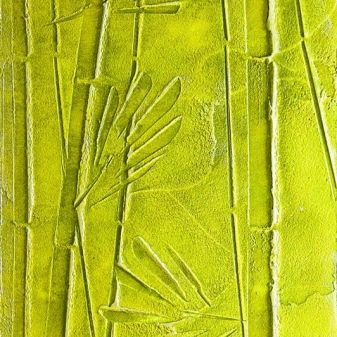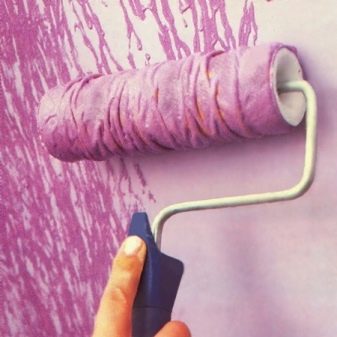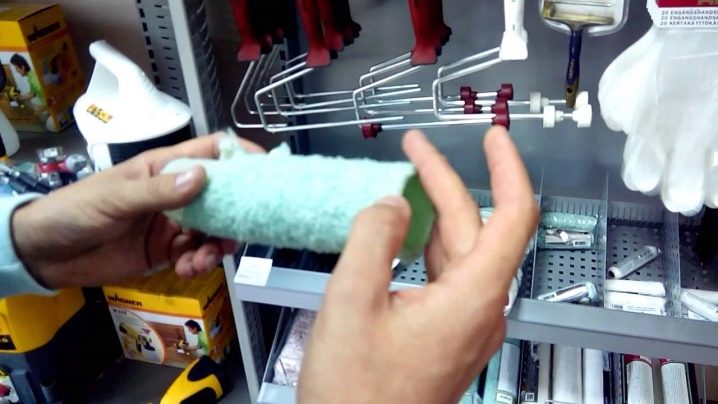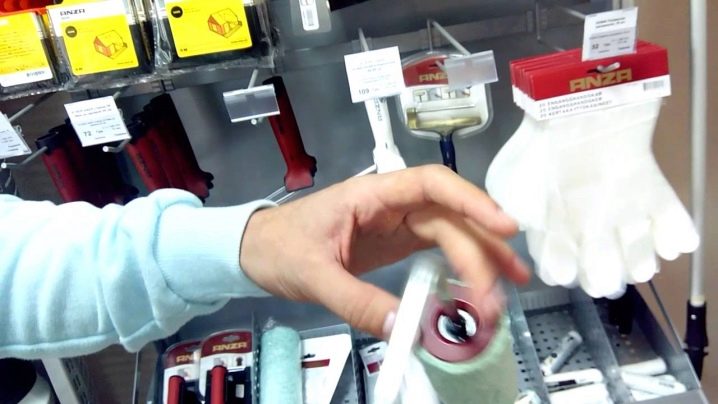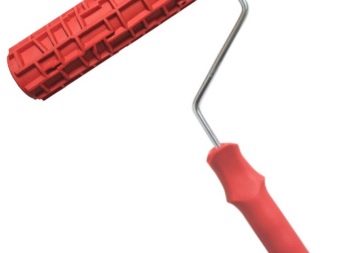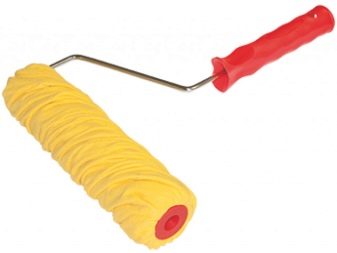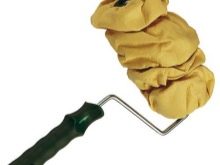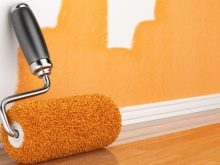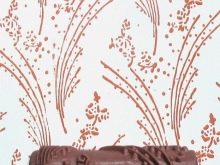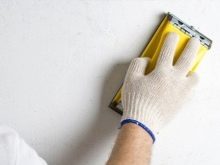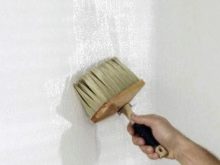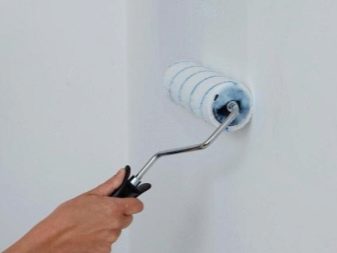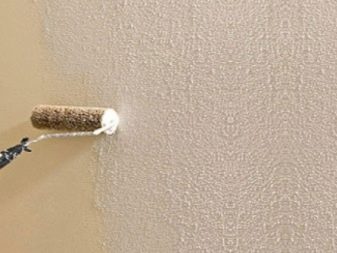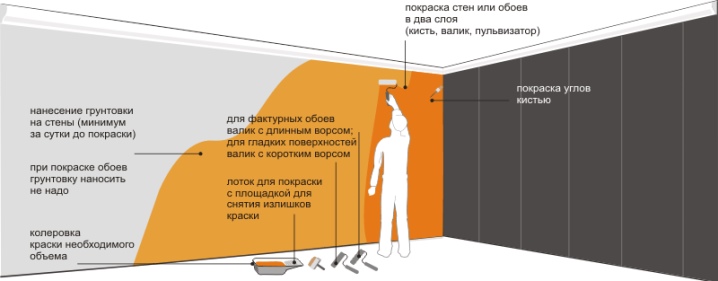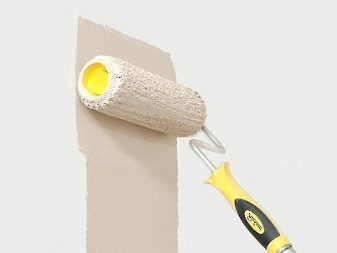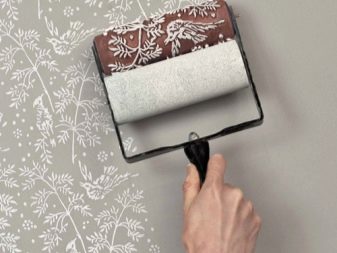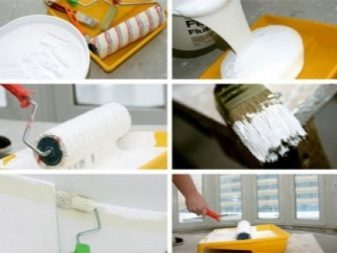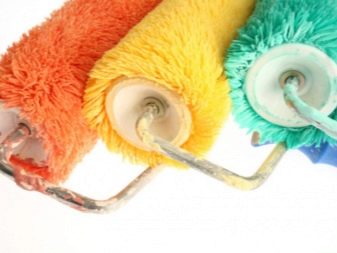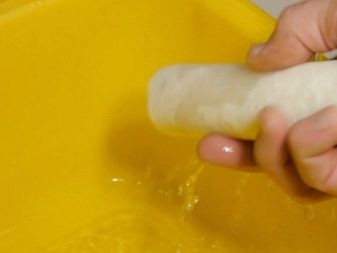Textured rollers: types and uses
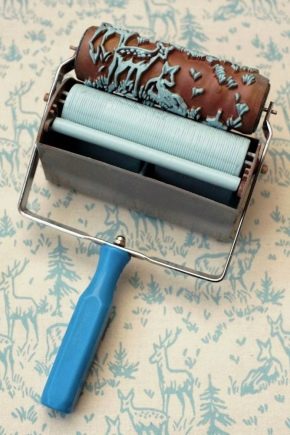
Textured finish of surfaces is one of the possibilities to give an individuality to interior design. It is performed with special painting tools - textured and textured rollers, with which you can decorate the walls with artistic painting or create interesting decorative effects on them.
The quality of this type of finish depends on how thoroughly the foundation was prepared, the coating technology was observed and the roller itself was correctly chosen. Consider the types of relief painting tools and how to use them.
Application features
There are two ways to use a roller for decorating surfaces.
- In the first case, it is used as a tool to stamp various patterns: from the simplest to the most complex fantasy ones, just like when wallpaper is being pasted, cloths are joined to each other to continue the pattern. The roller can be pressed with different force, resulting in a more or less pronounced relief.
- In the second case, with the help of a rough roller or a tool with a patterned fur coat on the wall, they imitate the texture of various materials: brick, wood, marble or stone, and also make a glaze - spectacular blurry spots.
To create a designer wall decoration, you can purchase ready-made decorative roller. or build it yourself. So that you can better navigate the range of textured paint tools, let us dwell on their varieties.
Kinds
The design of the standard roller includes a metal bar holder with a cylinder and a handle. Basics of the cylinder can be metal, plastic, rubber. Structural specimens with a picture provide for a rotating cylinder,gaining color composition, in combination with a rubber nozzle, on the surface of which an ornament is carved to create prints. The main difference between the paint rollers is to cover the cylinder.
Materials
For the manufacture of coatings for cylinders are different materials, depending on what it may be:
- Rubber or silicone with a variety of grooves and protrusions of various sizes, due to which a variety of decorative effects are created that imitate brickwork or relief with a pattern.
- Foam rubberwhich is convenient to work with water-dispersion paints and paint small areas. Its disadvantages include the poor painting of the uneven plane, the formation of splashes under intense pressure and the fragility.
- Foam plastic - It is a cheap analogue of the rubber roller. Minus foam - susceptibility to mechanical stress, so this tool in the process need to repeatedly change to a new one.
- Leather - it can be used to achieve a very beautiful effect imitating a marble coating. Venetian plaster is best applied with a natural leather roller, as it perfectly copes with the solution of this problem.
- Wooden - since the tree is an environmentally friendly material, it is advisable to use such rollers for finishing children. They allow you to get on the surface treated with paint, a beautiful convex ornament.
- Plastic - when using it, the decorative mixture will fall as it should only on an absolutely smooth surface, therefore, it is impossible to do without careful preparation of the base. In addition, plastic is prone to cracking due to prolonged use.
- Shaggy (fur) - as a coating can be used both natural and artificial fur - polyacryl and polyamide, having different lengths of villi. The degree of roughness and depth of patterned patches on the treated surface depends on the length of the threads.
Invoices
Decorative rollers differ in a variety of structures, due to which final ornaments are obtained. The purpose of some tools is an imitation of the texture of natural materials, and others - the simple creation of an arbitrary pattern.
According to the method of application, they are:
- Textured products. For their manufacture used hard or soft rubber.When such a tool rolls a wet plastered surface, it becomes embossed. Using rollers with a different pattern or just a rough cylinder, you can get the texture of a variety of materials from fur and wood to textiles and stone chips and even bamboo fiber. The fur coat provides the effect of multidirectional fibers; a roller with a rubber coating, where a special looped pattern is cut, allows to imitate natural stone, and traces of bubbles remain after the sponge instrument.
- Structural adaptations. With their help, a complex repeating ornament is applied to the plaster, for which the stencil roller is intended. A feature of use is the application of a finishing coating on an already finished surface, for example, a painted or exactly plastered wall. By decorating proceed when the plane is completely dry. The most beautiful ornament turns out if to use the figured roller with a certain pattern.
Effects
Decorative surface finishes are endless possibilities for creativity. Of course, for these purposes it is easiest to use ready-made textured design rollers that will become the ideal assistants for creating all sorts of complex and very beautiful decorative effects:
- "Diagonal" - an unusual abstract pattern of oblique lines.
- “Blots” are picturesque spots with arbitrary outlines resembling spreading drops of liquid.
- “Rain” - despite the name, due to the presence of chaotic lines and branching pattern on the cylinder, visually this effect looks like a fancy floral pattern.
- “Frosty Morning” is an original ornament, resembling a pattern of frost, remaining on the glass in winter in frosty weather.
- "Rhinestones" - a symmetrical ornament of large imitations of precious stones arranged in rows.
- "Flowering meadow" - spectacular fantasy floral ornament.
Not less beautiful effects are obtained when using rollers in combination with other tools for decorative and finishing works. Suppose that in order to decorate a wall with a cute polka-dot pattern, a standard roller is used together with a stencil - purchased or made on its own from thin plastic.
To create the bamboo effect, the base is covered with a white decorative mixture using a trowel. It is also used to form a background pattern. While the base layer is not dry, a trowel or a spatula creates a pattern imitating bamboo shoots. Then the wall is treated with decorative wax using a paint roller. And in the end they place point accents with decorative lacquer of silver color to make the pattern more expressive.
Glaze - blurry spots of deep shades that differ in saturation are made by painting the wall with a basic color scheme and winding a chaotic pattern with a dry or wet cloth or cellophane. To create original textures, you can use a sponge to create a soft spotted ornament or a brush for effective splashes.
An interesting effect is obtained from arbitrary prints on the wall of your own palms.
How to choose?
A variety of painting tools for decorative painting can complicate the choice of the roller. To avoid mistakes when purchasing, we suggest using the tips of masters who have been engaged in decorative and finishing works for years.
What should be done:
- Check the quality of the working part of the roller and its resistance to deformation. To do this, the coat must be perceptibly crumpled, and then assess the state. Strong dents on the coat - a reason to refuse to purchase such a roller.
- When choosing a long pile roller, it is necessary to carry out a visual inspection of the fur coat for falling out fibers, which will necessarily stick to the painted wall, which does not look attractive.
- Ensure the reliability of the byugel - the bracket that acts as the basis of the tool. Soft byugel deformed faster, which not only shortens the life of the roller, but also adversely affects the quality of the finish.
For painting walls, a product with a standard short handle is quite suitable, whereas for ceiling decoration one should already purchase an instrument with a special telescopic handle.
What to look for when buying:
- Structural rubber roller - in this case it is important to evaluate the quality of rubber and cylinder work. A good tool has an elastic coating and is easily scrolling, not vibrating roller. The optimal solution for creating an ideal design is a tool in which a lubricating cylinder and a bunker are provided, which allows you to pull the entire pattern without the need to be interrupted to saturate the coat with paint;
- Textured instrument with foam rubber coat - here you need to make sure that the selected sponge coating has pores of the required diameter for obtaining the decorative effect of burst bubbles or lunar craters;
- Leather embossed roller - since it is used mainly for working with Venetian plaster, then try to consider only those products that have natural leather coating. It is impossible to make prints on a plastered base with synthetic analog devices - once, and they can dissolve - two;
- Roller from the pile - here you need to be guided by the length of the fibers, ranging from 0.2 cm to 2.5 cm. The effect of strong "shaggy" walls create a long-pile roller;
- A patterned instrument - figure punch drawing is of great importance: the most beautiful ornaments are obtained through a combination of fine lines and jumpers present in the pattern.
Stencil or texture roller can be bought or made by hand. An ordinary dyeing tool is supplied with a homemade cloth, suede, paper or spongy fur coat, securely fixing it with thread.It is good to apply chaotic spotty ornaments with this gadget.
Surface preparation
Wall painting is the kind of finishing work that everybody can master, most importantly, prepare a surface with high quality. If we neglect the pre-treatment of the walls, then the quality and durability of the finish can not count.
Work order:
- Clean the surface from the old coating, for example, wallpaper.
- Smooth the unevenness on the plaster or concrete base with a grinder.
- Prime the wall and seal the cracks, sinks, chipped plaster mix.
- Level the base with a finishing putty and grind.
- Dust the surface with a vacuum cleaner or a grass brush.
- Re-treat the base with primer to increase adhesion to the decorative coating and reduce its consumption.
When the wall is completely dry, you can start decorating.
Paint application
For many newcomers who are just entering the world of repair, it seems that using a paint roller, given its elementary design, is easier than ever. Nevertheless, work with paintwork materials (paintwork materials) requires some knowledge, without which perfect finishing, alas, is impossible.
So, first paint the corners with a brush or an angle roller. LKM mix thoroughly with a construction mixer at low power. Fill the cuvette with paint and roll the roller in it back and forth, so that the fur coat should be properly painted. In the end, an instrument is carried out along an inclined corrugated base of the cuvette to remove excess paint composition and its uniform distribution over the working part of the roller - a fur coat.
To determine the surface area of the working surface with that amount of paint that the roller absorbed at once, you need to roll the paint on the wall to make a square. In mind, it is necessary to break it into several strips, focusing on the width of the fur coat. Suppose we are dealing with five bars.
Procedure:
- Apply a decorative coating start on top of the corner.
- Strip No. 1 is skipped: immediately, by moving it from bottom to top, strip No. 2 is painted.
- The strip No. 3 is skipped, and the strip No. 5 is filled with a bottom-up movement, then No. 4, and already after this, strip No. 1 and No. 2.
This method of painting contributes to the uniform distribution of the coloring composition and greatly facilitates the painting of walls.
Then, moving from top to bottom with a roller, several horizontal stripes are drawn. Finishing to carry out each strip, the tool is necessarily torn off from the base. Two hikes guarantee that the square will turn out perfectly dyed.
Now it remains only to type paintwork materials and, guided by this scheme, apply the paint further. The horizontal distribution of the coloring composition involves the capture of the previous square at a distance equal to the width of the working part of the roller.
The procedure for rolling a picture with a patterned tool:
- The tray must be filled with paint for impregnation of the foam part.
- Attach the structural rubber part of the roller and roll them several times on the corrugated base of the tray to remove excess paint and varnish materials to prevent the formation of smudges.
- Having pressed the roller to the working surface, they begin to form a pattern by laying a patterned path from top to bottom, reaching the edges of the base to be decorated.
To create a second patterned track, the instrument is applied clearly to the border of the first strip to ensure a uniform distribution of the pattern.
Care
Painting tools - brushes and rollers will last longer if properly cared for. After finishing work with water-dispersion paints, wash the roller well enough under running water to rinse the dye particles out of the coat. Therefore, it is freed from the fur coat and washed, and a sponge or rag is used to clean the byugel and handles. Washed brushes should be dried in a suspended form: so the bristles will not break.
To work with different types of decorative coatings should take care of a variety of removable coats. This solution allows you to reduce the cost of materials and make the finish in compliance with all rules.
For how to paint the paint roller, look in this video.
